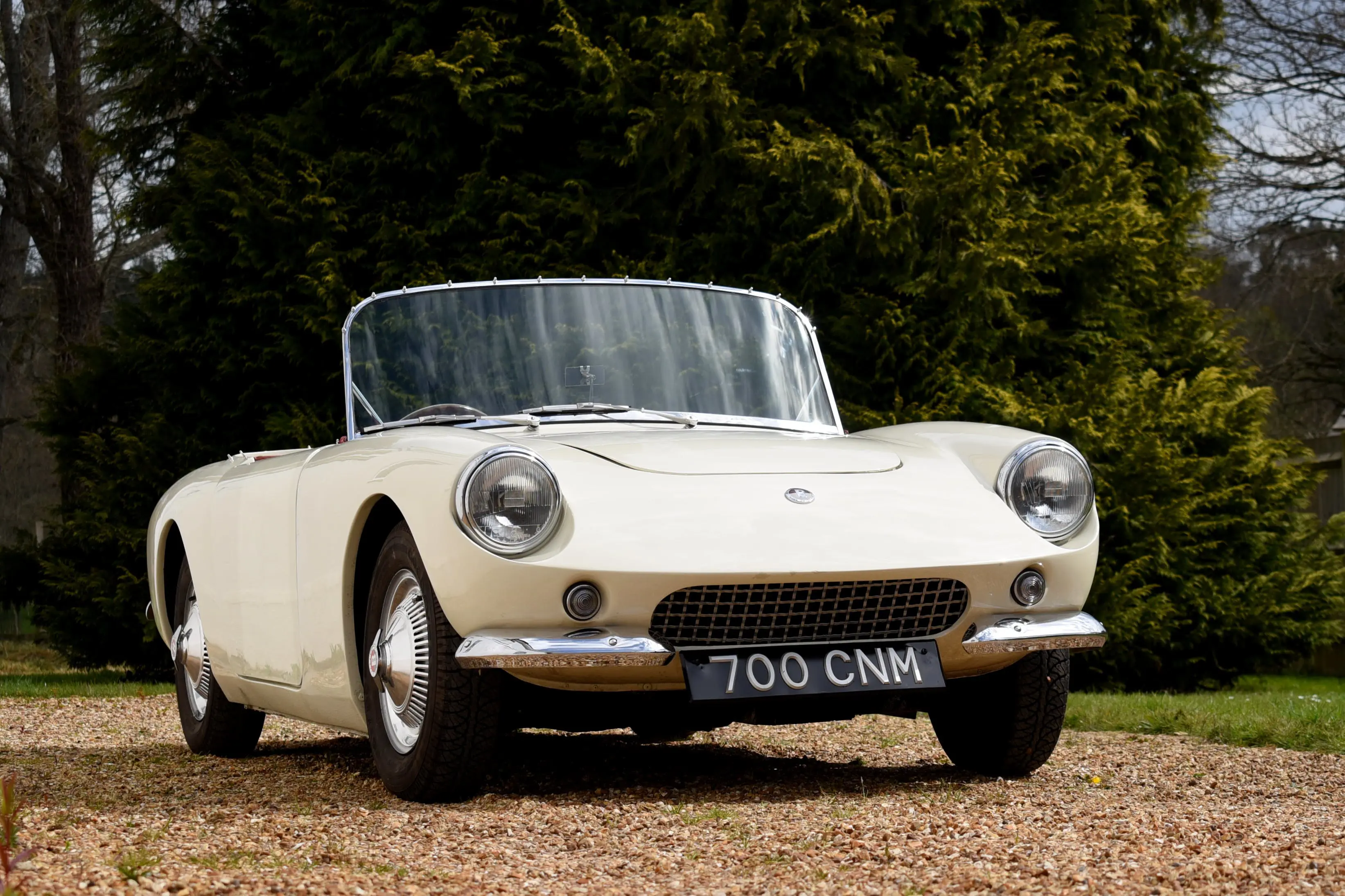CELEBRATING THE BERKELEY BANDIT
28 June 2022
Last month, a unique open two-seater sold at auction for £28,000. 700 CNM was not just a star of the 1960 London Motor Show but the only known example of the Berkeley Bandit, one of the most promising sports cars of its generation.
In the 1950s, the Biggleswade concern of Berkeley Coachwork was one of Europe’s largest caravan manufacturers, and in 1956 they diversified into building cars. Two years later, the Austin-Healey ‘Frogeye’ Sprite’s debut significantly impacted the small manufacturers of lightweight two-seaters. The company’s management responded by the Bandit, and in 1960 they commissioned John Tojeiro, the designer of the AC Ace, to create a new model; the styling was the province of one Cavendish Morton. The 997cc engine, transmission and rear axle from the 1959 Ford Anglia 105E marked a departure from the marque’s previous two-stroke offerings, and the bodywork combined a sheet steel chassis with a GRP floor and panning. The specification further included front Girling disc brakes and all-independent suspension.

Motor Sport proclaimed, “The recent announcement of the Berkeley Bandit will gladden the hearts of sportsmen as the formula hit upon by Berkeley Cars Ltd. looks to be tailor-made for sports-car racing.” as ‘something a chap could keep in his cycle shed’. The Evening Standard noted with amusement how the MD’s wife insisted on “doors wide enough to use the car with decorum” and “padding on all normally sharp edged to stop stockings being damaged”. In a rather more serious vein, there was also “a passenger-handle that cannot be opened by a child pushed forward by hard braking (her daughter was once so thrown, the door opened, and the child tumbled into the street)”.
The top speed was 80 mph, and although at £798 10s, the Bandit was more expensive than the Sprite, the BMC product was, to quote Donald Healey, “something a chap could keep in his cycle shed”. Meanwhile, the Berkeley featured a carpeted floor, safety belt mountings, a central locker with a lid doubling as an armrest, an adjustable steering column and even a boot lid. The designers fashioned the cabin around two 18 stone gentlemen while the sales team further spoke of various “competition options” and the possibility of specifying the FWA Coventry Climax engine. Sadly, the parent company was experiencing considerable financial difficulties, so Berkeley Cars Ltd ceased trading in February 1961.
As a result, a mere two Bandits left the work, the Earls Court show car and a second example with the Ford Consul Classic’s 1340cc. The last sighting of the latter was in Swindon during the late 1960s, which makes 700 CNM all the more important. Had Berkeley been able to endure until 1962, the reduction in Purchase Tax would have made their ambitious sports car more economically viable and a genuine alternative to the new Triumph Spitfire. It is easy to appreciate why the Bandit attracted so much attention at the 1960 Motor Show – and, had the fates been kinder, it would have been the perfect car for a dashing James Fox look-a-like to take on a jaunt to Goodwood.
With Thanks To – Angie Voluti
